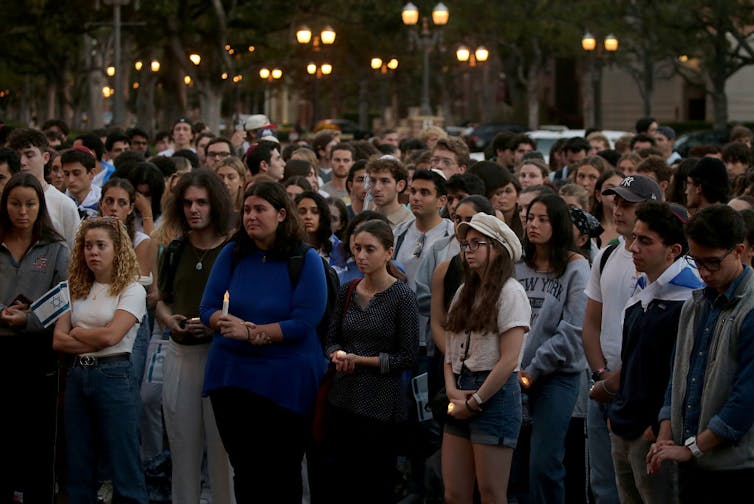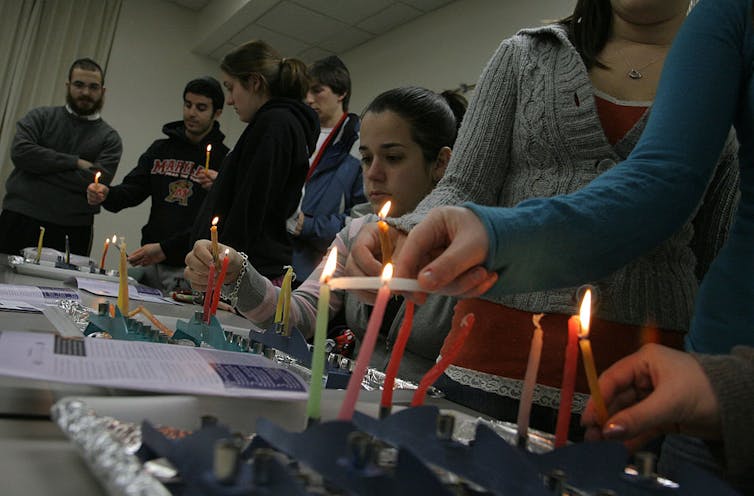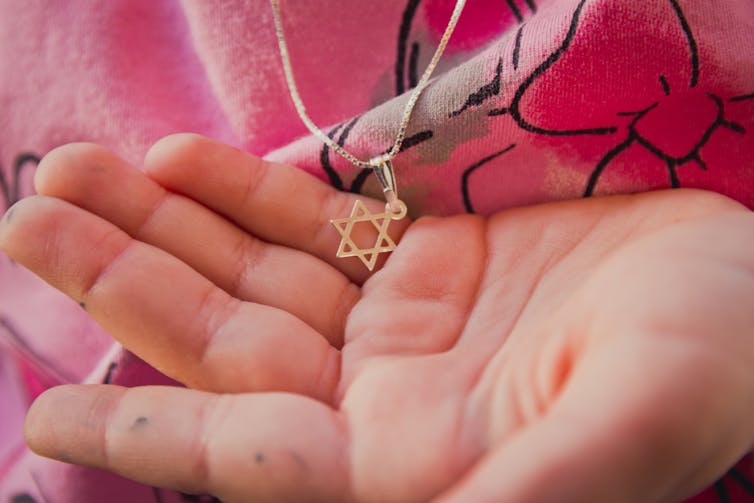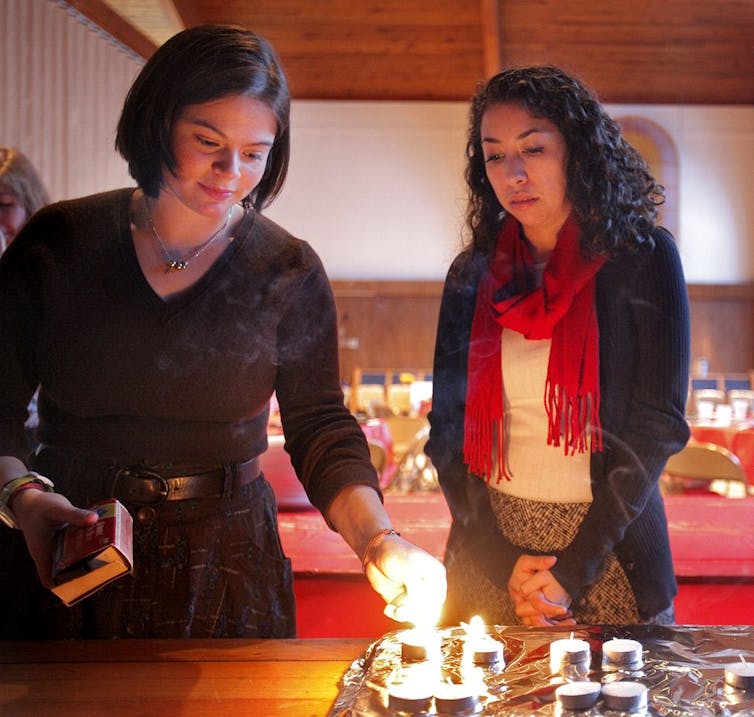(The Conversation) — As commencement season comes to a close, many campuses remain riven by the Israel-Hamas war. At the Massachusetts Institute of Technology, the undergraduate class president was banned from walking at her graduation after delivering a fiery – and unauthorized – speech accusing her school of complicity in Israel’s campaign to “wipe out Palestine off the face of the earth.” Anti-Israel protests broke out at graduation ceremonies across the United States, from Columbia to the University of California at Berkeley.
Since Hamas’ Oct. 7, 2023, attack and Israel’s retaliatory invasion of Gaza, many American campuses have been punctuated by vigils, demonstrations and disruptions. But the loudest voices aren’t necessarily the most representative. Activists’ pronouncements on either side fail to capture the range of student opinion about the war and its reverberations at home, including the documented rise in antisemitism and Islamophobia.
This is certainly true for Jewish students – buffeted by the war, the hostage crisis, campus protests and federal politics. Since January 2025, the Trump administration has used campus antisemitism and anti-Zionism as a pretext to assault higher education and implement hard-line immigration policies.
Indeed, one of the most striking findings of my study
on Jewish undergraduate attitudes, published in May 2025, is how many students described themselves as conflicted, uncertain, disaffected and even detached. Interviews across the country convinced my research team that any attempt to gauge Jewish student opinion with either/or categories are reductive and misleading.
Moving beyond numbers
In the wake of Oct. 7, my office hours quickly became a refuge for distraught Jewish students as they processed their thoughts. Few were content with pat answers.

Students at USC attend a vigil on Oct. 10, 2023, days after Hamas’ attack on Israel.
Luis Sinco/Los Angeles Times via Getty Images
I began wondering how representative they were. Tufts researchers Eitan Hersh and Dahlia Lyss found that since Oct. 7, more students were valuing and prioritizing their Jewish identities, even while an increased number were hiding their Jewishness on campus.
My Brandeis colleagues Graham Wright, Leonard Saxe and their research team, meanwhile, found that a clear majority of Jewish students said they felt a connection to Israel but were sharply divided in their views of its government. While most considered statements calling for the country’s destruction to be antisemitic, they differed about where to draw the line between reasonable and illegitimate criticisms of Israel.
These findings were instructive. But I was interested in learning more about the “how” and the “why” behind the numbers. Over the spring 2024 semester, my team and I interviewed 38 students on 24 campuses across 16 states and the District of Columbia. Participants reflected the broad religious, political, economic, geographical, sexual and racial diversity within the American Jewish population, particularly among Jews under 30. Some of the campuses were relatively placid; others were hotbeds of protest.
The ‘missing middle’
As my team analyzed transcripts, we identified six categories.
About one-third of the Jewish students we spoke with were actively engaged on either side of the conflict, whether through demonstrations or online advocacy. “Affirmed” students’ connection to Israel deepened after Oct. 7. “Aggrieved” students, on the other hand, had joined anti-war protests and voiced anger at Jewish organizations for ignoring Israel’s culpability for Palestinian suffering.
Two-thirds of the students we spoke with are in this “missing middle,” divided into four categories: Students gather at the University of Maryland to celebrate Hanukkah with a menorah lighting ceremony in 2007. The most straightforward of these categories is the “disengaged” students. Some, like Bella, on the West Coast – all of the names in this article are pseudonyms – knew little about the conflict before the war. What they learned since convinced them it was unsolvable and that they were powerless to promote change. The distance that some students felt from events in Israel and Gaza made it all the more baffling and odious to them when peers protested in ways that implied Jewish Americans were complicit. “I’m not personally doing anything,” complained Salem, a first-year student in the Midwest. “I don’t have anything to do with this.” Students whom we classified as “retrenched” reported anxiety, loss of sleep and a sense of isolation. Many of them were concerned that rejecting Zionism – that is, the movement supporting the creation and preservation of Israel as a national homeland for the Jewish people – had become a litmus test in their progressive circles. That was untenable for these students, because they viewed Zionism as a constituent part of being Jewish. Interviewees like Jack, a junior in the Pacific Northwest, spoke of removing their Star of David necklaces and censoring elements of their biography, because they perceived a social penalty for being Jewish. Since the start of the war, more students have said they try to hide their Jewish identity at times. By far, the largest group of Jewish students were struggling with mixed feelings about the war and its reverberations. What united these “conflicted” or “disillusioned” students was wariness of grand narratives and talking points that reduce the Israeli-Palestinian conflict to a contest between good and evil, or the powerful and the powerless. They also eschewed labels such as “Zionist” or “anti-Zionist,” saying they lacked nuance. Consider Elana, a “conflicted” sophomore in the mid-Atlantic, who told us she was uncomfortable in most Jewish spaces on campus because they effectively demanded that she declare her Israel politics at the door. It seemed to her that activists on both sides were more comfortable retreating into echo chambers than engaging in dialogue across differences. Then there was Shira, a “disillusioned” first year in the Midwest who viewed Israeli-Palestinian coexistence, however implausible, as the only alternative to mutual destruction. She refused to participate in anti-war demonstrations on her campus because she couldn’t abide the organizers’ confrontational tactics – but also to avoid blowback from pro-Israel family and friends. Students from Bowdoin College light Shabbat candles during a visit to Shaarey Tphiloh Synagogue in Portland, Maine, in 2011. One unambiguous finding from our study was how often our interviewees used language prevalent in progressive discourse. They spoke repeatedly about the importance of “safe spaces,” and felt that listeners’ understandings mattered more than speakers’ intentions when evaluating “hate speech” and “microaggressions.” Leo, a “conflicted” junior in the Deep South who uses they/them pronouns, acknowledged that some protesters who chant slogans such as “Free Palestine” and “Globalize the Intifada” may not recognize how many Jewish students interpret them: as antisemitic calls for Israel’s destruction. But that was no excuse, they insisted. “What I’ve noticed is that the people who are at those demonstrations have created their own definition of antisemitism,” without input from the vast majority of Jews – something progressive protesters would not have stood for if another racial, religious or ethnic minority were being discussed. The use of provocative and arguably antisemitic language was responsible for keeping Jews like Leo and Shira, who evinced deep sympathy for the plight of the Palestinians, from joining the protests. Fundamentally, however, many of the Jewish students we spoke with said they’d welcome opportunities to discuss the war and the broader conflict. But the “groupthink” on campus was stifling, they complained, whether in Hillel centers that toe a reflexively pro-Israel line or student organizations that demand unquestioned buy-in to a set of progressive orthodoxies. Joe, a “disillusioned” student in New England who just received his diploma two weeks ago, reflected, “When my friends complain that the ‘Free Palestine’ stickers on my campus are antisemitic, I think they just don’t want to be uncomfortable.” Discomfort can be productive, he added – as long as it is expressed in an environment that values intellectual risk-taking, dialogue across difference, and empathy. (Jonathan Krasner, Associate Professor of Jewish Education Research, Brandeis University. The views expressed in this commentary do not necessarily reflect those of Religion News Service.) Original Source:

Jahi Chikwendiu/The Washington Post via Getty ImagesOut of the fray

Maor Winetrob/iStock via Getty ImagesRejecting simple narratives

Gregory Rec/Portland Press Herald via Getty Images‘Safe spaces’ and ‘groupthink’
![]()